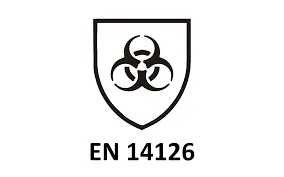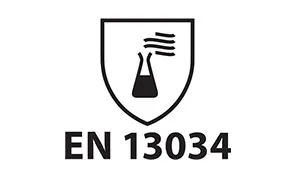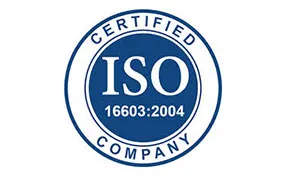You wear disposable protective clothing because you want safety, but the big question is always: how long does it really protect you? Using it for too short a time can be costly, while using it too long may be risky. This article explains the duration of protection of disposable protective clothing and gives tips to judge when it is time for a change.
What Is Disposable Protective Clothing?
Disposable protective clothing is designed for short-term, single-use. It includes:
- Coveralls
- Gowns
- Lab coats
- Shoe covers
- Gloves
They shield you from contamination, liquids, dust, and biological hazards. Unlike reusable protective clothing, these items cannot be washed or reused. Once damaged or soiled, the protective barrier fails, and the clothing must be replaced.
Practical tip:
Don’t judge safety by hours alone. Look at exposure type and contamination risk first.
Main Materials of Disposable Protective Clothing and Their Protection Time
From my experience, the material of your protective disposable clothing is the most important factor for safety. It decides how long you are protected in dangerous areas. Each fabric gives you a different level of protection, comfort, and wear time.
Key Materials of Disposable Protective Clothing and Their Protective Ability
1.Polypropylene (PP) Spunbond (Single Layer):
Most basic, lightweight disposable protective clothing use a single layer of spunbonded PP.
Protection Duration:
This material offers short protection. I recommend it only for quick, low-risk jobs like dealing with dry dust or general dirt. Around liquids or chemicals, your protection time falls to just minutes.
Example: I suggest Comfortsafe PP frocks (40g PP fabric) for low-risk work. They are great for food handling or safe pharma tasks.
2. SMS Fabric (Spunbond-Meltblown-Spunbond):
SMS fabric has three layers. A meltblown core sits between two spunbond polypropylene layers.
Protection Duration:
You get medium-level protection. I’ve seen people wear these safety protective clothing for hours in labs and hospitals. They also work for industrial jobs with some splash or dust risk.
It offers up to 95% bacterial filtration efficiency (BFE). This is much better than the BFE (<70%) of washed polyester garments.
3. Microporous Film Laminates:
These disposable protective clothing combine a PE film (6–20 µm) with a non-woven base. This makes them very resistant to liquids. They also let moisture escape, which I think is a great feature.
Protection Duration:
This material gives you long-lasting protection. I recommend it for areas with high infection risk, biohazards, or liquid chemical exposure. They perform better than basic SMS against wet or harsh chemicals.
4. PE-Laminated Polypropylene:
A layer of solid polyethylene film on polypropylene makes these disposable protective clothing completely waterproof barriers.
Protection Duration:
You get extended protection time. These disposable protective clothing work for hours against constant liquids or harsh chemicals. A word of caution from me: they are not breathable. Wearing them too long can cause heat stress.
Example Comparison Table
| Material | Structure/Layers | Typical Use Cases | Liquid Resistance | Protection Duration |
|---|---|---|---|---|
| Spunbond PP (single layer) | 1 | Dry dust, food/pharma packing | Low | Minutes to low hours (low hazard) |
| SMS | 3 (spunbond, meltblown) | Medical, labs, and some industrial hazards | Moderate | Several hours (based on use) |
| Microporous film laminate | 2 (film + non-woven) | Chemical splash, biohazards | High | Hours in wet/chemical areas |
| PE-laminated PP | 2 | Chemical/biohazard liquid protection | Very high | Extended hours (based on exposure) |
Factors Affecting How Long Disposable Protective Clothing Lasts
Based on my experience, how long you can use disposable protective clothing does not depend on hours. It depends on the level of exposure and the risk of contamination:
Single-use design:
You must throw away coveralls, gowns, and lab coats after you finish a job. Discard them if you can see contamination, if they are torn, or after any high-risk events.
Average usage:
Protection might last from a few minutes (for medical emergencies or cleaning spills) to several hours (for industrial work). I recommend you change it right after any contamination or damage occurs.
Shoe covers:
They usually last for one shift or less. You may need to replace them sooner if they are exposed to chemicals or rough surfaces. You should also change them if they get torn from heavy movement.
Environmental conditions:
Hot, humid places or jobs that require a lot of bending and moving can break down the material faster. This shortens the protective lifespan.
Official guidance:
Industry standards require you to replace disposable PPE immediately after high-risk tasks. Change them after major contamination or whenever you notice physical damage.
Typical Protection Times in Practice
| Task | Typical Use Duration |
|---|---|
| Light healthcare work | Up to 6.33 hours |
| Moderate-intensity healthcare | 2.25–2.83 hours |
| COVID-19 frontline (Avg.) | 194 minutes (~3.2 hours) |
| After a splash | Replace at once |
| If soiled or damaged | Replace at once |
| Maximum per shift | Never exceed 8 hours |
My key takeaway:
Based on my experience, you should plan to use disposable protective clothing for only one task or exposure. In real-world healthcare, I see that 3–6 hours is the safe limit for most uses. If you are in a high-risk, strenuous, or very contaminated area, I recommend changing suits more often. This ensures you have full protection.
My Guide to Protective Clothing Standards and Discard Rules
From my experience, industry standards have very strict rules. These rules tell you how long protective work clothing works. They also tell you when to throw it away. The rules come from tests on the clothing’s barrier, different risk situations, and actual contamination events.
Main Protective Clothing Standards and Discard Triggers
EN 14126: Protection against Infective Agents
- This standard sets barrier rules for germs.
- I recommend you discard the suit if it is torn or if you can see contamination. You must also throw it away after a single exposure to biohazards.
- Based on my experience, Type 5B/6B suits for this standard are for one use. Never reuse them if they might have touched pathogens.
EN 13034: Chemical Splash Protection
- This applies to Type 6 disposable protective clothing for limited chemical splashes.
- I suggest you throw away the suit if a chemical gets through, it looks dirty, or the maker says so.
- You must discard Type 6B suits at once after contact with infectious fluids or when the material breaks down.
ISO 16603: Synthetic Blood Penetration Resistance
- This measures how well clothing resists blood and fluids up to 20 kPa of pressure.
- If you see any fluid getting through at the test level (like 1.75 kPa for high-risk surgical use), you have to discard the suit.
ASTM F1671: Viral Penetration Testing
- This standard checks disposable protective clothing in healthcare to see if it can block viruses in fluids.
- I recommend disposing of it if the barrier fails, you see contamination, or it gets soaked while caring for a patient.
Standard-Driven Scenarios and Examples
ISO 16603 testing: If a suit can’t stop blood at 1.75 kPa, I advise against using it in high-risk surgeries. Always throw it out after use.
EN 13034 suits: These are marked for “single session use.” This means you must toss them after any dangerous splash or after putting them on and taking them off more than once.
Healthcare settings (FDA, CDC protocols): My advice is to remove and dispose of the protective clothing right after any surgery with possible contact with blood, viruses, or body fluids.
Manufacturer and Regulatory Guidance
Most disposable protective clothing I have seen says: “For a single use – discard after contamination or at the end of the shift.”
For clothes rated under EN 14126 and ISO 16603, my rule is to never wash or reuse them after they touch infectious materials.
I always suggest following the most strict discard rule you find on the label or in the technical papers.
Clear Discard Events as Defined by Standards
After it touches dangerous chemicals (EN 13034), germs (EN 14126), or blood/fluids at the tested pressure (ISO 16603/ASTM F1671).
When clothing gets dirty, torn, punctured, or you see any contamination.
After a single high-risk job. From my experience, these garments are not made for multiple uses.
Classification and Use Duration Limits
Type 5/6: You should discard it after it’s exposed to solids or liquids. Follow the rules from EN 13034 or EN 13982.
You must follow what the disposable protective clothing manufacturer says. My recommendation is to use it for just one event and then throw it away.
Summary Table of Standards
| Standard/Scenario | Discard Rule | Use Classification |
|---|---|---|
| EN 14126 |
After single-use or contamination | Infective agent/Single-use |
| EN 13034 |
After splash, soiling, or as instructed | Chemical splash/Single-use |
| ISO 16603 |
After threshold fluid contact, breach | Blood/fluids/Immediate |
| ASTM F1671 |
After viral exposure, penetration, or soiling | Virus/healthcare/Single-use |
My Key Point:
Disposable protective clothing certified with these standards is usually for a single use. I find it has strict rules for when to discard it. This applies after any contact with hazards, if you see contamination, or if the barrier is broken. Based on my experience, you should never reuse or try to clean this gear after it has been exposed to dangerous substances.
Disposable vs Reusable Protective Clothing: Duration, Cost, and Environmental Impact
I suggest you compare disposable and reusable protective clothing before you choose. The two types are for different jobs. Each has its own pros, cons, and effects.
Key Data Overview
| Category | Disposable Protective Clothing | Reusable Protective Clothing |
|---|---|---|
| Protection Length |
Single use; 3–6 hours | Multiple uses; weeks to months |
| Cost |
$3–$5 per use; high cost over a year | $50–$100 per suit; cheaper over time |
| Green Impact |
High landfill/medical waste | Lower waste; uses water/energy to wash |
| I suggest for |
Healthcare, labs, emergencies | Industry, farming, maintenance |
| Pros |
No washing, ready to use | Tough, saves money, comfortable |
| Cons |
Short use, creates waste, and ongoing cost | Needs cleaning, high up-front cost |
Real-World Usage and Industry Trends
In my direct experience with healthcare, during an outbreak, the use of disposable protective clothing goes way up. This increases both waste and costs.
I’ve seen construction sites switch to flame-resistant, reusable coveralls. They report lower costs and feel they are making real progress on their green goals.
How to Make Your Disposable Protective Clothing Last Longer?
From my experience, picking the right disposable protective clothing is the most important step for your safety. You must match your clothing to the hazard you face. This could be chemical, biological, or even dust. I recommend checking for ratings. For example, ASTM F1671 is for bloodborne pathogens. Chemical-resistant coveralls with polyethylene fabrics will protect you from liquids longer than basic polypropylene suits. If you work with toxic chemicals, a “Class 4” suit can protect you for up to 240 minutes from substances like benzene. This time is based on how fast the chemical seeps through the material.
Choosing Smart: Match Disposable Protective Clothing to the Hazard
Know your risk: I suggest you think about the chemical type, splash risk, how long you’ll work, and the temperature before picking your gear.
Check the standard: Look for the right certification for your job. ASTM F1671 is common for medical work, while EN standards cover chemical resistance.
Putting On and Taking Off Disposable Protective Clothing Correctly
Putting on and taking off your work protective clothing properly is as important as the gear itself. If you put it on wrong, you leave gaps. If you take it off wrong, you can contaminate yourself. I suggest you always follow the manufacturer’s instructions. For dangerous jobs, I recommend using a checklist or having someone watch you. In places like hospitals, small mistakes can let contaminants in. This shortens how long you are protected. Studies show that with good technique and normal activity, a medical suit can last 2.25 to 6.33 hours. If you’re doing light work, you might get even more time.
Storage and Disposal: Protection Before and After
Your gear will only work if you store it the right way. Keep it in a cool, dry place, away from sunlight and heat. This prevents the material from breaking down. After you use it, you must follow hazardous waste rules for disposal. This is vital if the gear was exposed to chemicals. I can’t stress this enough: Never reuse disposable gear. Do not reuse it if it is damaged, dirty, or worn. A small tear or any exposure means the gear is done. Its protection time is zero.
Final Summary
Working in risky places is not only about following rules. It also means choosing the right disposable protective clothing for the job. Good disposable protective clothing can help you stay safe, move easily, and avoid extra danger. Since every job site is different, it is smart to balance safety, comfort, and cost. If you need custom disposable protective clothing for your work, you can contact us, and we will give you a clear and fair quote.

.jpg)
.jpg)
.jpg)


